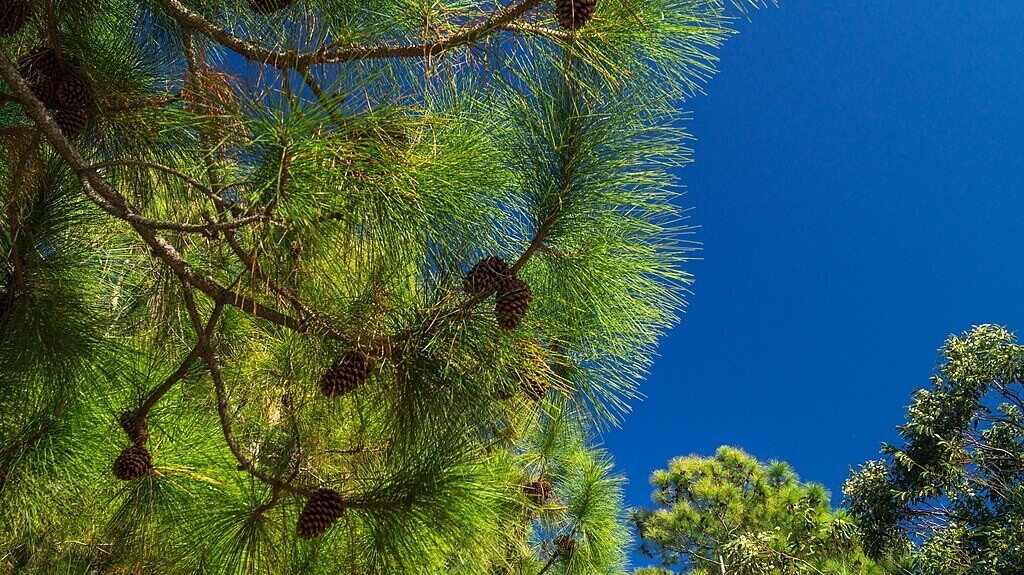
The Best Shade Trees for Your Tampa Bay Landscape
 Michael Tomaino
Michael Tomaino
One of the hallmarks of the Tampa Bay area is the endless sunshine. People flock from across the globe to visit the Sunshine State, bask along sandy beaches, and even come to call it home. It’s fair to say that it is this sunny-side-up environment that makes the region loved nearly universally.
Still, it is possible to have too much of a good thing. With the sun constantly sharing its cheery warmth, it’s not uncommon to want a break. From sunburns to sweltering heat in the summer months, a touch of shade can do a person a world of good. It brings a little balance to the tropical paradise that is Florida.
So, whether you’re crafting an idyllic HOA community or transforming your commercial landscape into a comfortable space for employees and visitors alike, populating your Tampa Bay landscape with some Florida-friendly shade trees is an outstanding idea. The question is: which shade trees are right for your landscape?
Here at Landcrafters, we’ve spent over two decades growing our knowledge of Florida shade trees, helping local businesses and residents implement them in strategic ways, and keeping them healthier. If you’re trying to throw some shade, you’ve certainly come to the right place. Read on to prepare your Tampa Bay property for summer by equipping it with the best shade trees.
The Best Shade Trees for Tampa Bay
Thanks to its welcoming climate, Florida is home to a plethora of plant life, including trees. Not all trees are created equal when it comes to providing shade, however. The trees you choose can be the difference between a property where people can find reprieve from the sun and one where there’s no escape. It’s fair to say that the stakes are high.
That’s why we put together this handy guide to Tampa's best shade trees. With the information here, you can rest assured that your property will be properly shaded while remaining aesthetically and functionally brilliant
A Few Different Oak Trees
When it comes to Oaks, you’ll want to consider trees like Live Oak and Shumard Oak, or rather, Quercus virginiana and Quercus shumardii. Both considered emblems of the South, these majestic trees have sweeping limbs that often will dive down toward the ground before shooting themselves back upward.

When mature, they can grow up to diameters of 150 feet–but on average, they’ve got a crown spread of about 80 feet with a height of nearly 50 feet. Southern Live Oaks are evergreen, which means they replace their leaves of short periods in the Spring season. Despite this, they maintain shade practically all year around and are beautiful additions to any Florida landscape.
Shumard Oaks share a lot of the same characteristics as the Live Oaks–though they tend to adapt a beautiful Fall color. Tall, slow-growing, and long-lasting, these trees make great choices for enduring, lasting landscapes in need of shade.
Try Out Elm Trees
Winged Elms and Drake Elms make for great shade trees. Winged Elms, also called Cork elms and Wahoo elms, are considered small to medium-sized trees that grow anywhere from 40-60 feet tall. They sprout lateral branches and flat, shady leaves. This kind of elm is easily adaptable, able to grow in partial shade or full sun, and isn’t picky about its soil.

In other words, it thrives–and with its bushy leaves, makes for a great shade tree all year around. The Drake Elm has similar benefits. It’s fast-growing, hardy, around 45 feet tall at its max, and usually makes for a great option for those seeking a smaller version of Winged Elms.
Bald Cypress
Long-living, slow-growing, and beautiful, the Bald Cypress is an investment for Tampa Bay landscapes–but a worthwhile one. Usually hollow, these trees excel in swampy areas, which means if you see a deep, knotty tree in a Florida marsh or swamp, you can likely expect it to be a Bald Cypress.

These trees are tall, large, and often grow their root systems up and out of the water–that being said, they can grow outside of the water. Where does the shade come in? With the flat, needlelike leaves. Though they might be thin, they grow in bulk, creating plenty of shade when trees grow large and mature. These leaves persist year around, making sure that shade is never lacking.
Sugarberry
Sugarberry trees may sound like a fairytale tree, but they are very real, and thankfully, great shade trees for Tampa Bay residents. Sugarberry trees can grow up to 80 feet tall when properly cared for, and though they’re considered “short-lived” trees, they actually live up to 150 years.

They grow best in the Southeastern states (hello, Florida!) and when fully grown provide an outstretch of shade. The southern version of a northern tree called the Hackberry, this medium-to-large tree is covered with light gray, smooth bark, and features pale green leaves and purple fruiting berries during the Spring.
Southern Magnolia Trees
Southern Magnolia trees are a staple of the southern states–Florida included. They’re fast-growing trees that can reach impressive heights–sometimes up to 90 feet if they’re properly cared for.

And their waxy, green leaves create a perfect umbrella of shade for those seeking a beautiful tree that keeps things out of the sun. The best part about these trees? They produce these gorgeous, white flowers–magnolias–that are incredibly fragrant when in bloom.
Red Maples
If you’re looking for a large shady tree that simultaneously produces a pop of vibrant color, look no further than the Red Maple. These large trees grow quickly–usually achieving heights from 60-90 feet tall! The best part about these trees? They’re bright–from Maine to Florida, they grow with an intense red ferocity that’s both visually appealing and aesthetically stunning.

A native plant in Florida, Red Maples grow relatively easily. And when they’re mature, they stretch out wide branches with flat, broad, bright red leaves that provide ample shade and plenty of personality for your landscape. These are a must for those seeking shade–but also a perfect choice for a dose of color. Whoever said we couldn’t have seasonal-looking landscapes in Florida, huh?
A Variety of Pine Trees
Pines like the Longleaf Pine, Pinus palustris and Slash Pine, Pinus elliottii are worthy trees to add to nearly any Tampa Bay landscape. The Longleaf Pine is a light color–almost an orange-brown that produces upright branches. The beautiful contrast of its rich, green needles make for an aesthetic addition to your Tampa Bay landscape.

This tree, like other pines, produces spiky pine cones that can grow up to 10″ long. The Slash Pine is a similar tree, and like the Longleaf Pine, it’s hardy. It’s easy to grow in Florida, stands the test of time (and weather) that the state throws at it, and eventually sprouts gorgeous needles that produce plenty of exceptional shade. The beauty of these trees? Though most people think that tropical flora and fauna are the pinnacle of Florida landscape, Pines are actually very Florida.
American Sycamore
The last Florida shade tree on this list (though we have several other suggestions) is the American sycamore. This tree grows quickly and is known for being robust. It is a popular choice for creating shade for yards and other areas in need of significant coverage. It can reach widths of up to 70 feet, making it a truly remarkable giver of shade.

While the American sycamore does lose its leaves in the fall—thereby allowing sunlight through at an increased rate—the sheer size of the tree provides some degree of shade year-round. In addition to its shade-giving abilities, American sycamore has downright breathtaking bark. It progresses from flaky and thin and green to pure white as your eyes travel up its massive trunk.
Should you decide the American sycamore is right for you, remember that it can become quite large. Removal is complicated and expensive due to the tree’s overall size.
Reach Out to Landcrafters When Choosing Trees For Your Tampa Bay
Landscape
Giving the people on your Tampa Bay property—be they residents, employees, or visitors—a brief reprieve from the Florida sun is a great reason to strategically place and plant shade trees, but it isn’t the only compelling benefit. Trees of this variety also do a splendid job of slowing the wind, reducing flooding and runoff, sheltering wildlife, and enhancing the visual appearance of your property.
If you’d like to learn more about shade trees in Florida, including those mentioned here, feel free to reach out to us. We have a team of experienced and passionate experts ready to assist you in helping your Tampa Bay property reach its fullest potential.
Image sources: oak tree, drake elm tree, bald cypress, sugarberry tree leaves, southern magnolia tree flower, red maple tree, pine tree branch, american sycamore tree

Michael Tomaino
Head Gardener for Landcrafters, Inc. Michael Tomaino, a cornerstone of Landcrafters since its inception, oversees all aspects of business operations with a wealth of experience. With years of adept team management and leadership under his belt, coupled with a robust educational background, both within and beyond the industry, Michael is dedicated to steering Landcrafters towards becoming the foremost landscape management provider in the Tampa Bay Area.

